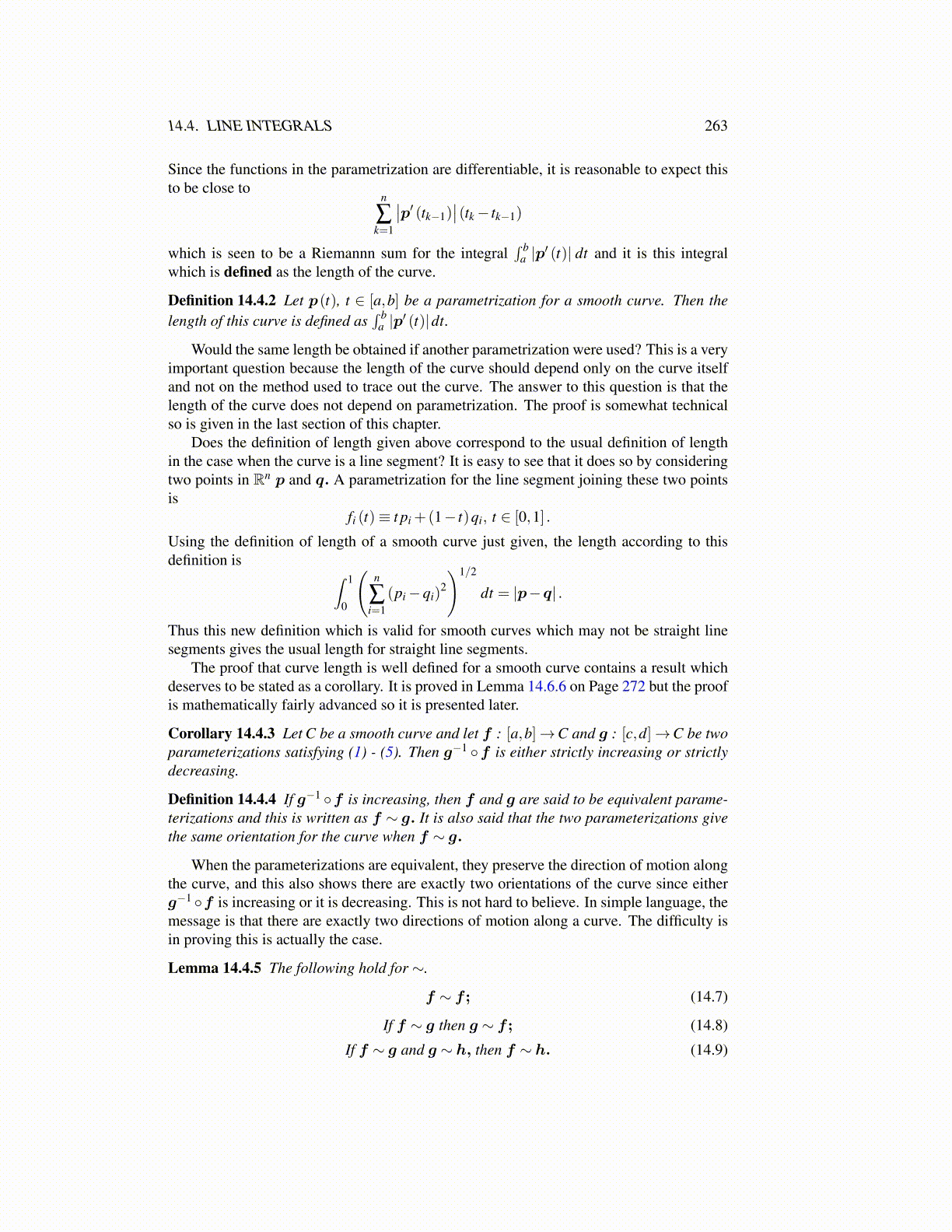
14.4. LINE INTEGRALS 263
Since the functions in the parametrization are differentiable, it is reasonable to expect thisto be close to
n
∑k=1
∣∣p′ (tk−1)∣∣(tk− tk−1)
which is seen to be a Riemannn sum for the integral∫ b
a |p′ (t)| dt and it is this integralwhich is defined as the length of the curve.
Definition 14.4.2 Let p(t), t ∈ [a,b] be a parametrization for a smooth curve. Then thelength of this curve is defined as
∫ ba |p′ (t)|dt.
Would the same length be obtained if another parametrization were used? This is a veryimportant question because the length of the curve should depend only on the curve itselfand not on the method used to trace out the curve. The answer to this question is that thelength of the curve does not depend on parametrization. The proof is somewhat technicalso is given in the last section of this chapter.
Does the definition of length given above correspond to the usual definition of lengthin the case when the curve is a line segment? It is easy to see that it does so by consideringtwo points in Rn p and q. A parametrization for the line segment joining these two pointsis
fi (t)≡ t pi +(1− t)qi, t ∈ [0,1] .
Using the definition of length of a smooth curve just given, the length according to thisdefinition is ∫ 1
0
(n
∑i=1
(pi−qi)2
)1/2
dt = |p−q| .
Thus this new definition which is valid for smooth curves which may not be straight linesegments gives the usual length for straight line segments.
The proof that curve length is well defined for a smooth curve contains a result whichdeserves to be stated as a corollary. It is proved in Lemma 14.6.6 on Page 272 but the proofis mathematically fairly advanced so it is presented later.
Corollary 14.4.3 Let C be a smooth curve and let f : [a,b]→C and g : [c,d]→C be twoparameterizations satisfying (1) - (5). Then g−1 ◦f is either strictly increasing or strictlydecreasing.
Definition 14.4.4 If g−1 ◦f is increasing, then f and g are said to be equivalent parame-terizations and this is written as f ∼ g. It is also said that the two parameterizations givethe same orientation for the curve when f ∼ g.
When the parameterizations are equivalent, they preserve the direction of motion alongthe curve, and this also shows there are exactly two orientations of the curve since eitherg−1 ◦f is increasing or it is decreasing. This is not hard to believe. In simple language, themessage is that there are exactly two directions of motion along a curve. The difficulty isin proving this is actually the case.
Lemma 14.4.5 The following hold for ∼.
f ∼ f ; (14.7)
If f ∼ g then g ∼ f ; (14.8)
If f ∼ g and g ∼ h, then f ∼ h. (14.9)